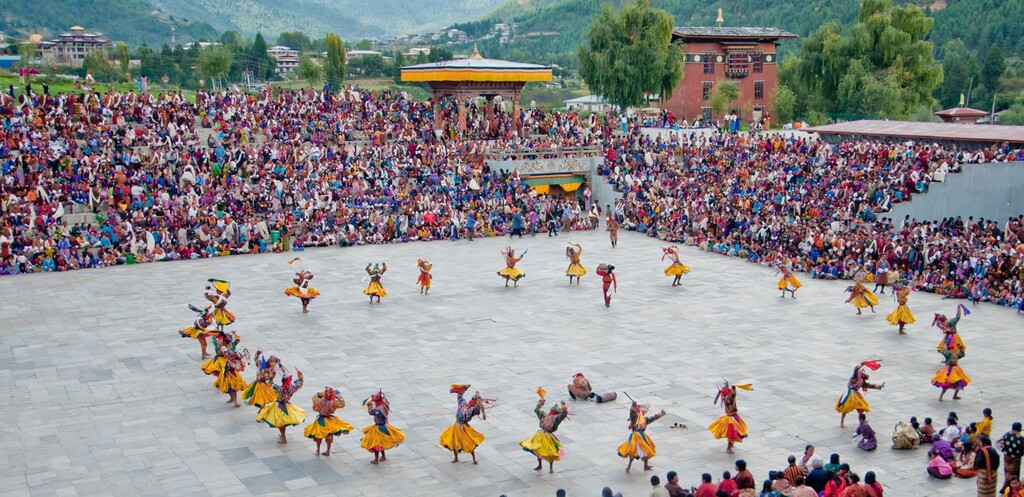
The tiny Himalayan Kingdom of Bhutan is a mystical land with a vast culture rooted in spiritual traditions. Every year, almost every town, every village and even every rural hamlet hold their own brilliantly colourful festivals (tshechus) celebrating everything from reigning monarchs, Buddhist deities to local harvests and the changing of the seasons. Whilst every tshechu is different, they are all joyous occasions filled with music, dancing, food and celebration and with festivals conveniently spread out over the calendar year, they can be a fascinating addition to any Bhutan itinerary.
Below we look at 5 of our favourite Bhutanese festivals:
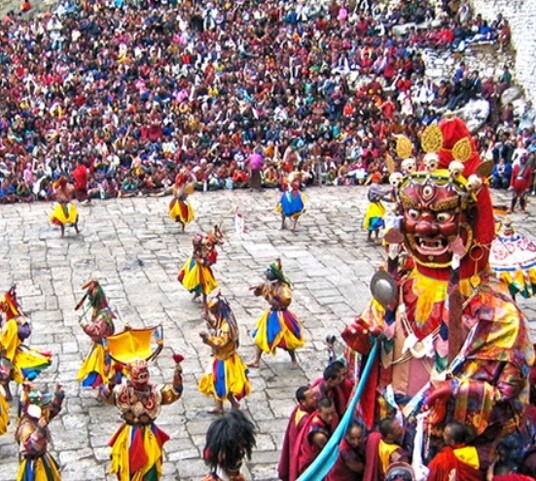
Paro Tshechu
By far one of the more popular and best-attended Tshechus can be found in the beautiful Paro Valley in the majestic courtyard of the Paro Dzong. Celebrating Bhutan’s Buddhist roots, the festival is perhaps the most profound of the Buddhist Calendar, and lasts for five days. The first three days of the tshechu are a colourful affair, with masked dancers, music, dramatic performances and intricately embroidered Buddhist art, creating a fascinating insight into Bhutan’s spiritual connection with Buddhism. This all leads to the fourth day of the festival, known as Thongdral, when the sacred Thanka (silk painting) is unveiled, said to enlighten all those see it.
Provisional 2022 dates: 12th – 16th April.
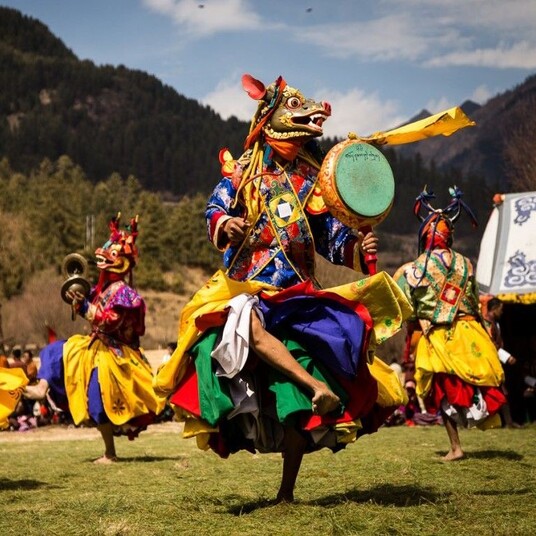
Haa Summer Festival
Held in July in a seemingly off the beaten path location, the Haa Summer Festival is perhaps the best opportunity to observe Bhutan’s festival atmosphere and local traditions away from the masses. The alpine setting is beautiful, and just 2 hour’s away from Paro is very accessible to those who know where to look. Simply celebrating the arrival of Summer and the nomadic lifestyle, the genial occasion is filled with local cuisine, dancing, music and archery. The whole community of the Haa Valley is involved in some capacity and this is a wonderful way to celebrate rural Bhutan.
Provisional 2022 dates: 09th – 10th July.
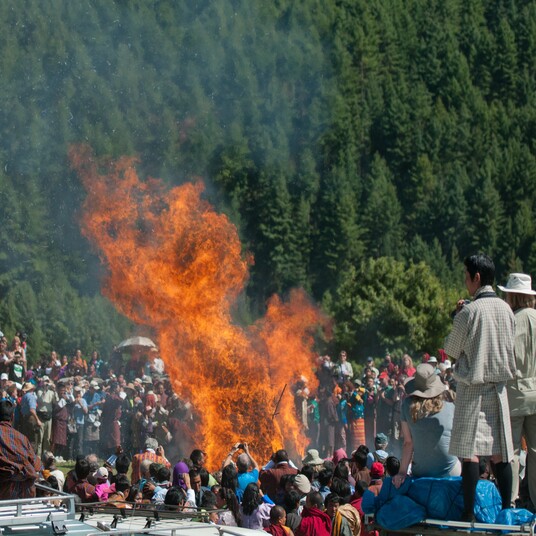
Jambay Lhakhang Festival
The loudest, the most colourful and perhaps the most spiritual tshechu in Bhutan can be found in the Bumthang Valley every November. The carnival atmosphere lasts for five days in the Jambay Lhakhang temples in Bumthang and celebrate the sacred Guru Rinpoche, who is thought to have brought Buddhism to Bhutan. The masked dances are performed by monks dressed in colourful traditional attire and fire rituals are held frequently. Perhaps the most unique tradition though is the evening naked dance, thought to purify the sins of attendees and bring luck to the harvest season.
Provisional 2022 dates: 08th – 12th November.
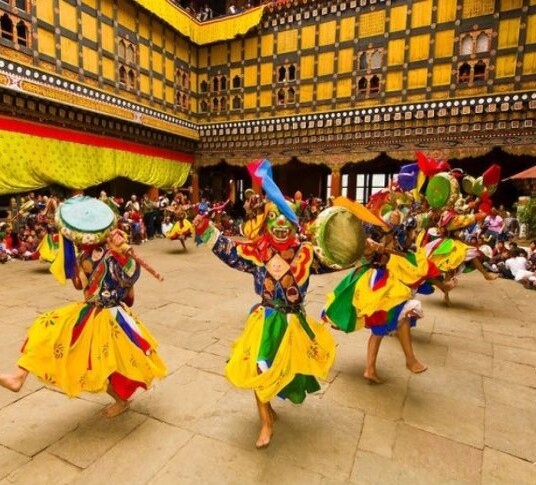
Punakha Tshechu
Set in what is widely considered the most beautiful Dzong in Bhutan, Punakha Tshechu is immediately proceeded by the Drubchen, a two-day meditative experience thought to rid the world of evil. Wonderfully juxtaposing the ambience of the Drubchen, three day’s of festivities follow. Whilst the common tshechu themes of masked dances and music can be readily observed here, the Punakha Tshechu is perhaps better remembered for the procession of monks who throw handful of oranges into the river, symbolising an important but mystifying encounter in Bhutan’s history.
Provisional 2022 dates: 10th – 11th November (Drubchen).
12th – 14th November (Punakha Tshechu)
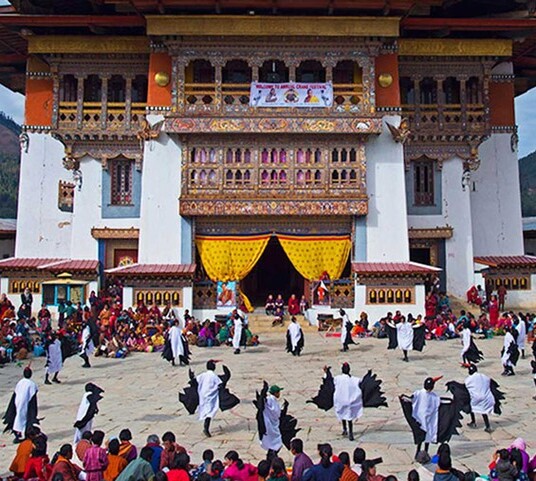
Black-Necked Crane Festival
Bhutan’s winter months sees the return of the endangered bird species of the Black-Necked Cranes, deeply symbolic to the population of Gangtey as a sign of hope and connection with nature. The annual festival is held in the courtyard of the Gangtey Goenpa and attracts many from the Phobjikha valley who come to rejoice and celebrate the arrival of the migratory birds. Folk songs are continuous during the festivities as are bird-themed dances and the environmental themed performances by local children are not to be missed. Needlessly to say, the festivities should be combined with scenic hikes in the valley to observe the Black-Necked cranes.
Provisional 2022 date: 11th November.


